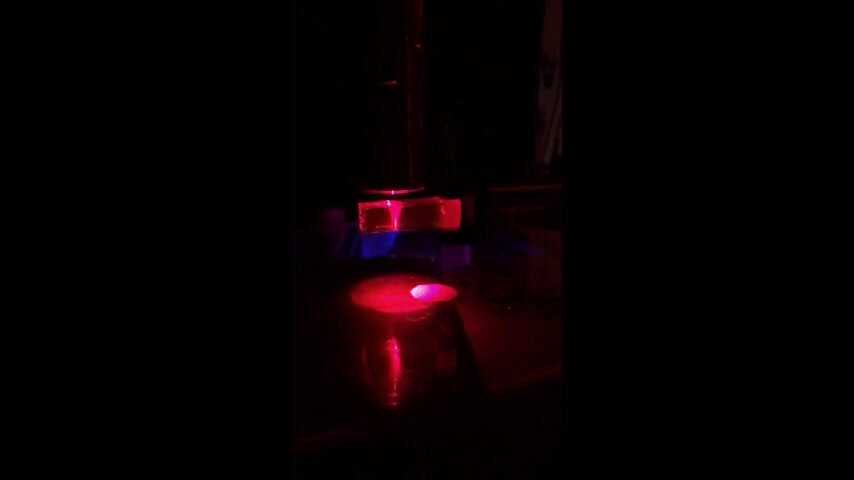
The 3-D printing revolution has changed the way we think about plastics. Everything from children’s toys to office supplies to high-value laboratory equipment can be printed.
The potential savings of producing goods at the household- and lab-scale is remarkable, especially when producers use old prints and recycle them.
Buying plastic filament for printing can be expensive, says Joshua Pearce, the lead researcher in the Open Sustainability Technology group at Michigan Technological University. Pearce and his students have whittled the cost of printing to ten cents per kilogram — down from $30 per kilogram.
They made this leap by recycling plastic that had already been printed, using a recyclebot and plastic resin codes developed by the team.
In a new paper from the research group, published inResources, Conservation and Recycling, the authors lay out how they achieved this price reduction and how to recycle 3-D printed objects more broadly.
“The centralized paradigm of both manufacturing and recycling is being challenged by the rise of 3D printing,” Pearce says, explaining that labeling and reusing materials is voluntary.
Current labeling schemes, however, are not detailed enough for 3-D printed recycling. Plastic is not just plastic; there are many kinds, and specific polymers behave in specific ways — which makes a big difference for 3-D printing.
“We want to know about polymers the same way a chemist would,” Pearce says, admitting that the seven codes in the US recycling system fall short. In comparison, China has 140 codes for different polymers. “Currently, the most common 3-D printed plastics are grouped in the category seven polymers in the US,” he adds.
That seven category is the catch-all group and means little as a label. Most widely used and conventionally produced plastics fall into the first and second categories — the same groups that cover plastic water bottles and milk jugs. These can be recycled for 3-D printing, but the two most common plastics for 3-D printing are PLA (polylactic acid) and ABS (acrylonitrile butadiene styrene). PLA is often used as biodegradable dinnerware and ABS is the hard plastic of Lego blocks. Although they’re distinctly different, being lumped with so many others in the seven categories makes it difficult to reuse these plastics in 3-D printing.
To overcome these issues, Pearce and his team developed a new resin code identification system based on the Chinese codes. They focused on polymers that could be recycled in 3-D printing and made the system expandable to accommodate innovations in printing and plastics.
“We also demonstrated how to incorporate recycling symbols into 3-D printed objects using open-source and parametric scripts for our new print codes,” Pearce says. The scripts are freely available on Appropedia.
Read more: A Call to Change Recycling Standards as 3-D Printing Expands
The Latest on: 3D print materials
[google_news title=”” keyword=”3D print materials” num_posts=”10″ blurb_length=”0″ show_thumb=”left”]
via Google News
The Latest on: 3D print materials
- 3D Printing Complex Living Materials with Genetically Modified Plant Cellson May 2, 2024 at 2:34 pm
Scientists are harnessing cells to make new types of materials that can grow, repair themselves and even respond to their environment. These solid "engineered living materials" are made by embedding ...
- 3D Printing Finds a Homeon May 2, 2024 at 8:49 am
“Prefabricated 3D printed homes reduce the amount of labor required to build a home, thereby making homes safer, potentially cheaper, and much faster from design to completion,” says Buff López, an ...
- Study unveils 3D printing PQD-polymer architectures at room temperatureon May 2, 2024 at 7:52 am
A technology enabling the fabrication of intricate three-dimensional (3D) quantum dot (QD)-based structures at room temperature has been developed.
- A 3D Printer On Every Desk? Why Companies Are Buying More 3D Printerson May 2, 2024 at 4:56 am
Entry-level desktop 3D printers saw record sales in 2023. It’s not the number of machines sold that’s surprising; it’s who’s buying them: businesses.
- Programmable Living Materials Created Using Synthetic Biology and 3D Printingon May 2, 2024 at 2:07 am
Scientists are harnessing cells to make new materials that can grow, repair themselves and even respond to their environment.
- Combatting Homelessness and Climate Change Through 3D-Printed Homeson May 1, 2024 at 11:29 am
The building and construction sector is the biggest culprit in the climate crisis. The construction industry uses over 3 billion tons of raw materials, ...
- Engineered living materials: Scientists 3D print with bio-ink made from tobacco cellson May 1, 2024 at 5:03 am
Also known as EPLMs, “engineered plant living materials” are a new frontier that marries synthetic biology and 3D printing, an invention that’s inspired many improvements to the mechanism itself as ...
- Crafting Programmable Living Materials With Synthetic Biology & 3D Printingon May 1, 2024 at 4:59 am
New study uses 3D printing and genetically modified plant cells to create complex, self-repairing materials that could revolutionize biomanufacturing and construction. Scientists are harnessing cells ...
- 3D Printing in Biomedical Sensing Technologyon April 30, 2024 at 5:00 pm
Various 3D printing technologies exist, including stereolithography (SLA), fused deposition modeling (FDM), and selective laser sintering (SLS), each offering distinct advantages in terms of ...
- Affordable starter home is 3D-printed in just 18 hourson April 25, 2024 at 6:31 am
One of the most exciting possibilities of 3D-printed architecture is that it could revolutionize affordable housing. Portugal's Havelar shows this may soon be within reach with its inaugural ...
via Bing News










